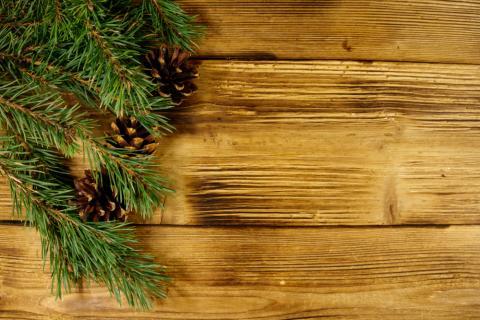
If you live in a particularly snowy region of the world you might think that there is very little opportunity for wild foraging. Everything appears asleep and buried during winter. With the right knowledge, however, you will find that there are plenty of plants that are ideal for harvesting in winter. When harvesting wild plants at all times of the year please remember to practice the Honorable Harvest: don’t take the first plant you see, ask permission, only take what you need, and say thank you.
Birch Tree (Betula)
Birch is a common tree to the Northern hemisphere and was a favorite among Native peoples for its many useful properties, services, and beauty. It can be found as far north as Alaska and Northern Russia, where people have made birch sap syrup and chaga tea for generations, and as far south as Florida and even southern China.
- Ecosystem Services: Birch is one of the first trees to grow in a forest. It is therefore an important forest succession plant, inviting birds and insects to take shelter in its branches before the great hardwood trees are able to catch up and take over. Birches have a short life span and therefore are common nurse trees on the forest floor. They help build the soil for the next generation of the forest.
- Where to Find: Birch is most commonly found in young, temperate deciduous forest. If you live in the northern half of the United States you will easily be able to find birch trees in your local park or the forest behind your house. If you happen to live near a piece of land that was cleared about 50 years ago, you might have luck finding birch trees starting to grow. Look for the tell-tale, shining white bark with black striations moving horizontally around the trunk.
- Human Use: Human use of birch trees varies from using the bark as paper and fire starter to eating its flowers in the spring. What makes birch most unique, however, is the fact that it is the only species of tree that can host the chaga mushroom, a widely appreciated, woody mushroom known for its ability to trigger the immune system and fight cancers.
Pine Needles (Pinus)
There are at least 126 species of pine trees growing all over the world, and pine has been widely used as a paper tree, common lumber tree, and tar-producing tree. It is an evergreen that grows rapidly in most ecosystems and is one of the few species of plants that can be found all over the world.
- Ecosystem Services: Like birch, pine trees are the first to grow in a forest thanks to their extremely soft wood. In this way they help to halt erosion and promote bird life in forests. Pine needles that fall to the ground eventually build a more acidic soil, which is beneficial to other plants such as blueberries and wintergreen.
- Where to Find: You will find pine trees in similar areas to birch trees. They are evidence of either a young forest or a forest that has been logged. In the western part of north America, all forests are pine dominated, so all you will have to do is step outside, learn to identify the evergreen, thin needles that grow in a variety of numbers and clusters depending on the species, and you will have no problem finding these trees.
- Human Use: Besides its industrial uses, pine can provide many healing benefits. Pine needles are extremely high in vitamins A and C and make a great addition to an immune system support tea. Their best use, however, is as a facial steam. The anti-inflammatory and astringent properties of the plant help clear and tighten pores—not to mention, pine smells fantastic.
Uva Ursi/Kinnikinnick/Bearberry (Arctostaphylos)
Uva ursi (latin for “bear grape”) is a plant that goes by many names and has many subspecies in North America, much like pine and birch. The services and uses of each of the different iterations of the plant are, however, the same.
- Ecosystem Services: Uva ursi specializes in rocky, hard-to-grow-in soil at high elevations. It grows slowly around rocks and holds the soil, helping reduce erosion in already delicate alpine forests and keeping precious water from evaporating out as quickly. The berries of the plant provide food for ground-roaming animals.
- Where to Find: You will have to go to the mountains to find uva ursi thanks to its above mentioned ecological specialty. Look for small, oval leaves growing in clumps, with thin fingers of new branches crawling along the ground. The plant remains evergreen during the winter, and so is ideal to look for in this season. It will stand out among the rocks and snow as the only green thing in sight. Also look for red berries growing on the plant.
- Human Use: Uva ursi in its many forms has been used by many groups of indigenous peoples in North America, both as a plant for smoking and as a treatment for urinary tract infections. Although no research has been conducted to affirm the use of the plant as a treatment for a UTI, it is commonly used among herbalists as a supportive tea to assist in combating urinary infections.
Partridge Berry (Mitchella repens)
Where I grew up in New Hampshire, partridge berry was all around the forest. I did not pay much attention to it, however, until one Christmas my neighbor took me out to help collect some of the plant with her. She liked to collect it to make Christmas decorations. The plant’s bright green leaves and warm red berries were perfect for a holiday center piece.
- Ecosystem Services: Partridge berry creeps along forest floors, covering the ground, and quietly populating hard-to-grow places, similar to uva ursi. It performs all the services of a ground cover plant, fastening the soil, promoting the growth of forest-beneficial mycelium, and providing food for birds over the winter.
- Where to Find: Look carefully on temperate forest floors in the winter especially for small red berries about the same size and shape as a kernel of popcorn. Long tendrils will be moving away from the main body of the plant like fingers, with lobes of small oval leaves alternating off the tender branch. The plant literally creeps along the ground!
- Human Use: Besides making a lovely decoration, partridge berry has traditionally been used as a food (the berry is edible, although quite tasteless), and more often as a female reproductive health support. The dried leaves of the plant are used to make a tincture which is then consumed to alleviate painful menstrual cramps as well as aid in pregnancy and delivery.
Wintergreen is another plant that is still around in the wintertime. Hence the name, “wintergreen” since its always green in winter! The problem with wintergreen is that it could be buried under a thick layer of snow, depending on where you live. Half of the benefit of searching out these plants, however, is getting out and being active during the hard, cold days of winter. Foraging will get you exercising and engaged with the natural world, which can only serve to improve your health. Enjoy the outdoors!








